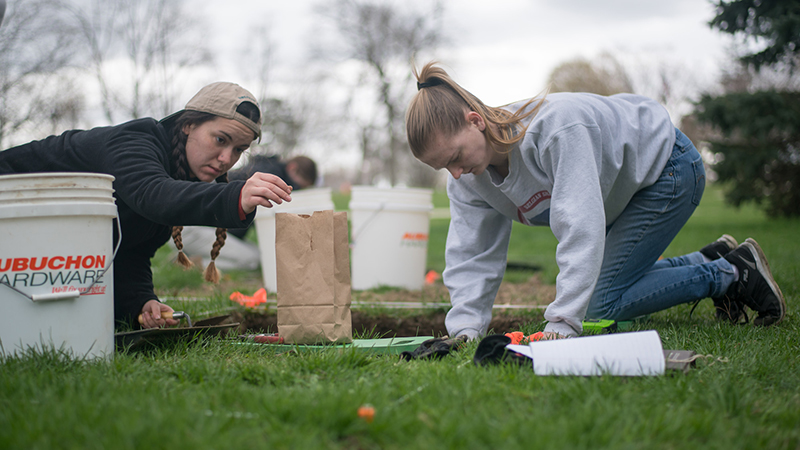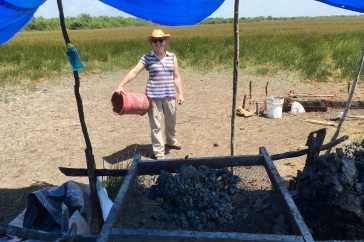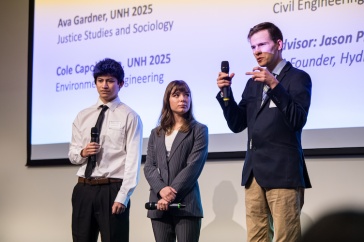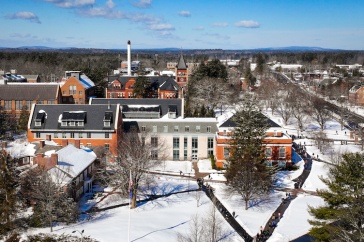
It’s hard to believe it when gazing across the Thompson Hall lawn today, but back in the late 1800s and early 1900s, a train ran through it. Engines chugged their way up and down the Boston and Maine Railroad corridor several times each day, running right along the western edge of the lawn and through where Demeritt Hall now stands.
What’s left of the tracks, the station and its outbuildings are photographs and remnants. The track was relocated to its present location in 1912.
UNH anthropology students spent part of last weekend searching for some of those remnants near an outcropping of spruce trees along Main Street behind James Hall.
“We are standing where the train station was, and we’re looking for this little outbuilding,” says lecturer Marieka Brouwer Burg, pointing at a rectangular white structure in an historic photo, the only record of the building’s existence aside from the bits and pieces students are finding in the ground.
Four students are excavating 4 x 4 squares using trowels. They remove large pieces by hand, then dump their buckets over screens designed to sift out smaller pieces. They’ll record what they find through notes, photos and videos.
“We’re finding a lot of charred wood, shards of pottery and heavily melted metal,” says Kayla Kruger, a sophomore anthropology major who is brushing earth into a dustpan then pouring it into a 5-gallon bucket. She pulls out a chunk of metal about half the size of her palm.
Brouwer Burg, an archaeologist, says the metal pieces they’re finding today and have found during previous digs suggest the building was probably incinerated on purpose, perhaps around the time the tracks were moved. “It seems as though the building burned pretty hot, hotter than it would have burned if it had naturally caught on fire.”
Digging UNH

Associate professor Meghan Howey says UNH's campus archaeology program helps preserve the university's cultural heritage. Howey and alumna Jillian Price ’13 uncovered an interesting part of that heritage back in 2013.
She fingers the metal Kruger just extracted. “It looks melted; it’s sort of slaggy. This must have been torched to a very high temperature to have these kinds of thermodynamics going on.”
Brouwer Burg says the students in this class — ANTH 514: Method and Theory in Archaeology — have been waiting all semester to get out and dig. “We spend the first third of the class talking about different theories and paradigms and how that’s developed over time,” she says. “Then we get into the methods and, at the end of the semester, we put all of that into practice and get out and try some excavation.”
Little is known about this particular building, and that’s part of the point of the dig.
“What’s wonderful about archaeology is that it can give voice to people or events that nobody thought to write down,” says Brouwer Burg. “Not everything is documented. Archaeology sheds light on pieces of history.”
Interested in archaeology?
ANTH 411: Global Perspectives on the Human Condition – An Introduction to Anthropology will be offered during summer session. Find out more

-
Written By:
Tracey Bentley | Communications and Public Affairs
















































